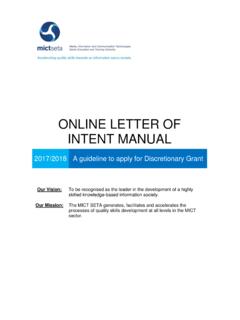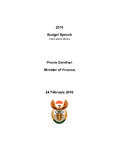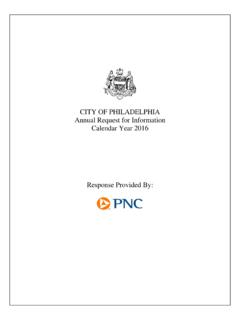Transcription of Sector Skills Plan 2016 to 2021 3 August 2015 - …
1 Sector Skills plan 2016 to 2021 3 August 2015 1 Foreword South Africa is coming to the end of the third phase of its National Skills Development Strategy (NSDSIII). The MICT SETA Sector Skills plan (SSP) provides a clear path towards achieving the Skills development objectives of the MICT Sector . This annual update of the SSP continues to keep track of progress against the initial plan (2011 - 2016 ) and keeps view of the changing context in which the initial targets begin to shift and change. The need for technical, professional and management Skills is clearly identified. MICT SETA will work together with employers, providers, government and the community to channel appropriate resources into creating the pool of talent that will meet the need. Integrating this Skills plan into MICT SETA s business plan and the business plan of its partners will provide the formula for success.
2 The combined efforts from all stakeholders to produce this document are gratefully acknowledged. The following deserves special mention: The Ministerial representatives on MICT SETA s Board Industry, via representation on MICT SETA s Board Organised Labour, through representation on MICT SETA s Board Our thanks go to all the stakeholders whose collective wisdom has been incorporated into this document. Sharing of knowledge is the catalyst for achieving South Africa s Skills development potential and economic growth. Oupa Mopaki CEO: MICT SETA Johannes Mjwara Chairperson: MICT SETA Board 2 Acronyms Abbreviation Description ACSSE Academy of Computer Science and Software Engineering ATR Annual Training Report BBBEE Broad-Based Black Economic Empowerment BEE Black Economic Empowerment BMI Business Monitor International CAGR Compound Annual Growth Rate CECS Centre of Excellence in Cyber Security CSIR Council for Scientific and Industrial Research CWU Communications Workers Union DoC The Department of Communications DHET Department of Higher Education and Training DTI Department of Trade and Industry DTPS Department Of Telecommunications and Postal Services DTT Digital Terrestrial Television EE Employment Equity ETQA Education and Training Quality Assurance FET Further Education and Training (Institution) FPB Film and Publication Board GDP Gross Domestic Product HEMIS Higher Education Management Information System HET Higher Education and Training (Institution)
3 HRDSSA Human Resource Development Strategy of South Africa HSRC Human Sciences Research Council ICASA The Independent Communications Authority of South Africa ICT Information and Communication Technology IPAP Industrial Policy Action plan ISOE Institute of Sectoral and Occupational Excellence IT Information Technology ITA Information Technology Association IITPSA Institute of Information Technology Professionals South Africa JCSE Johannesburg Centre for Software Engineering MDDA Media Development and Diversity Agency (MEA) AfriMEA) Middle East and Africa MICT Media, Information and Communication Technologies NDP National Development plan NEMISA National Electronic Media Institute of South Africa NQF National Qualifications Framework NSA National Skills Authority NSI National System of Innovation NSDS National Skills Development Strategy 3 Abbreviation Description NSF National Skills Fund OFO Organising Framework for Occupations OGS On-line Grant System (the MICT SETA system for electronic capturing of WSP and ATR data)
4 PC Personal Computer PICC Presidential Infrastructure Coordinating Commission QCTO Quality Council for Trades and Occupations SABC South African Broadcasting Corporation SAP Systems, Applications and Products SAQA South African Qualifications Authority SARB South Africa Reserve Bank SDF Skills Development Facilitator SDL Skills Development Levy SETA Sector Education and Training Authority SIC Standard Industrial Classification SIP Strategic Integrated Projects SITA State Information Technology Agency SKA Square Kilometer Array SME Small and Micro Enterprises SMEs Small and Medium Enterprises SSP Sector Skills plan StatsSA Statistics South Africa STB Set Top Box TV Television TVET Technical Vocational Education and Training UJ University of Johannesburg USAASA Universal Service and Access Agency of South Africa WIL Work Integrated Learning WSP Workplace Skills plan 4 Executive Summary The MICT Sector Skills plan (SSP) has been developed over the period of NSDS III in order to map out and plan for the occupational Skills needs in Advertising, Film and Electronic Media, Electronics, Information Technology and Telecommunications.
5 Each year it is updated to analyse the changes in the Sector s labour market. It does so against the backdrop of the economic performance of the Sector and developmental agenda of the country. It sizes up the gap between the demand and supply for Skills and finally outlines strategies for dealing with the identified challenges. Sector Profile and Analysis The five sub-sectors of the SETA are increasingly converging into a single ICT ecosystem as information, telecommunications, advertising and even film are streamed using similar technologies. The fortunes of the sub-sectors are, however, following different trends. While IT, electronics and film are experiencing growth; advertising and telecoms have reached a plateau. There are over 23,000 employers in the Sector of which about half are in the information technology sub- Sector . Small-sized employers constitute 96% of all employers in the Sector .
6 Levy payers represent almost 22% of all employers (5978 companies) in the Sector , a 13% increase from 2014. The number of employees in the Sector is estimated at 805,000. The racial breakdown is reflected as: 41% black, 38% white, 11% coloured and 10% Indian/Asian. Almost 40% of employees are women. The shift to electronic and digital media continues to have immense impact on the Sector , increasing the demand for expertise in ICT programming, mobile technology and cyber security. Government s Strategic Infrastructure Project (SIP-15) relating to Expanding Access to Communication Technology is expected to drive demand for database and network professionals as well as for specialist data scientists, able to deal with large volumes of data. Skills Demand, Supply and Scarcity In 2015, the MICT Sector employers are reporting a labour need as a percentage of total employment.
7 This, against a weighted total employment figure of 805,034 implies about 50,636 vacancies across the Sector . Of the 40 qualifications the MICT SETA has listed on the NQF, 24 have learners registered against them. In 2014/15, there were 10,159 learners enrolled in learnerships, internships and Skills programmes, which are up from 6,001 in 2013/4. Between 2011 and 2014 there has been an 83% achievement rate in learnerships and Skills programmes. A significant portion of total enrolment has been in the following five qualifications: Further Education and Training Certificate: Design Foundation(NQF4) 5 Further Education and Training Certificate: Information Technology: Technical Support National Certificate: Information Technology: End User Computing National Certificate: Information Technology: Systems Development National Certificate: Information Technology: Systems Support Vendor programmes continue to be popular choices for short-term training and upskilling.
8 To respond to the persistent demands for vendor certificates, the MICT SETA has started mapping these programmes against the unit standards of existing NQF qualifications. In addition, task teams have been set up to provide input to the occupational qualifications being developed by the QCTO. A number of consultative road-shows were held to explain the process followed to the adoption of a QCTO qualification. To date, the pre-scoping sessions have been held with industry stakeholders to discuss the journalism qualification and a producer qualification (for the film and TV industry). A partnership has also been developed with Cape University of Technology to establish a programme to address the articulation between a TVET course and higher education. The first intake of 1000 learners into a TVET college for a Certificate in IT Service Management (NQF level 5) is expected in 2016 .
9 The learners will be credited with 50% of the first year course completed at a TVET college. Further articulation processes will be carried out with other courses; with the aim of rolling this out across all TVETs and Universities of Technology. The MICT SETA is also supporting a number of Innovation Hubs, which are creative spaces where people can meet, brainstorm and work on projects. These may become incubators for research and development in the Sector . The hub is also an environment in which Skills are learnt and exchanged across a number of disciplines. With the Department of Higher Education and Training s (DHET) increasing focus on recapitalising TVET colleges, the MICT SETA is providing support through learnerships, bursaries, work integrated learning and career guidance. Specific partnerships have been established with Taletso, Tshwane North (Mamelodi Campus), Orbit, Mopane, Waterberg and Vuselela colleges.
10 Sector Skills Priority Actions In order to meet the Skills challenges in the Sector , MICT SETA intends to work on the following objectives: Provide reliable labour market information and make data available in a useable format to inform planning. Support the mapping of learning pathways for each of the scarce Skills occupations. These need to be communicated and explained to learners in schools, colleges and universities as well as those already employed in the Sector . Identification of relevant qualifications, or where these are not in place, the development (via stakeholder processes led by the QCTO) of relevant qualifications. 6 Work with stakeholders in each sub- Sector to set realistic training targets, assess provision and access across provinces, regions, industries, occupations and different size companies, and identify weaknesses. Partner with industry stakeholders and with public TVET colleges and universities to enable much of this strategy to be implemented.











